Milk yield, milk quality and large litters
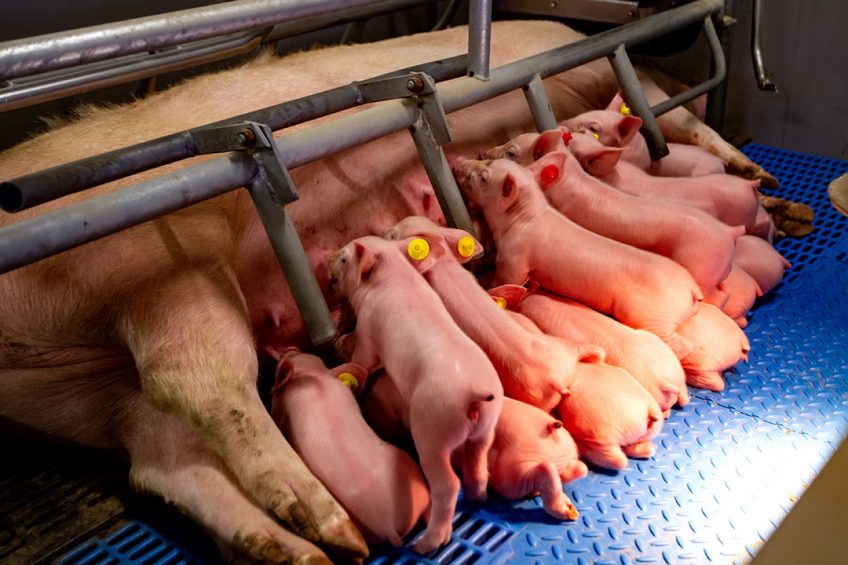
Pig herd performance has developed rapidly over the last two decades. Today 30 piglets or more weaned per sow per year is not unusual. Is management always well prepared for that and do feeding strategies and feed composition match that level of production.
There has not been much interest in the topic ‘condition feeding of sows’ in recent years. Of course, sows are fed more selectively today than ten years ago. But a real condition assessment – i.e. a body condition scoring (BCS) – is not carried out on every farm. It’s not necessary to measure the backfat thickness continuously with an ultrasonic device. Still, it must be possible to assess sow conditions in individual production cycles and classify them in the corresponding condition class.
Figure 1 is over 20 years old – but it is still up to date. Only sows that have been specifically fed for their condition are able to reach their genetic performance potential and to ensure that the large number of piglets born alive have a high enough birth weight. Only such sows are able to produce enough nutritious milk from the very beginning – i.e. also plenty of colostrum. Sow condition scores should always range between at least 2.5 and not significantly higher than 3.5. The optimal condition score 3 should be reached as soon as possible after successful insemination. The quantity of feed is then allocated on the basis of the breeding condition.
Figure 1 – Condition classes for breeding sows (Body Condition Scoring – BCS).

Milk yield and milk quality
For large litters, milk is more than just a source of nutrients. Milk is important as a source of antibodies, because piglets are born without immunoglobulins. Their mother’s colostrum is the only source, so it’s crucial. The content of the important immunoglobulin IgG in the colostrum decreases significantly in the first 12 hours after the piglets start drinking (see Table 1). That was also confirmed by a recent scientific study carried out in Finland and the Netherlands by a team led by? Shah Hasan at the University of Helsinki in Finland in 2019. In the first ten hours after birth, the IgG content was reduced by 43% and for 70% of the sows examined the IgG content in the milk was reduced by 80% after 24 hours.
Another important factor is the amount of colostrum intake. Piglets that could only absorb 200 g of colostrum had a 20% lower weaning weight compared to piglets that received 350 g and more colostrum. Most of the piglets lost in this study belonged to the group that had received little colostrum.
Which factors have a significant influence?
In addition to protein, ileal digestible amino acids and energy, two more factors are important:
• Mineral content and the resulting differentiation of the Dietary Cation Anion Balance (DCAB) value between gestation and lactation feed; and
• The content of insoluble fermentable structural carbohydrates.
The gestating and lactating breeding sows’ requirements in terms of the minerals calcium, phosphorus, sodium and magnesium have often been investigated. The necessary daily ration – depending on litter size and milk yield – is well known. Another important success factor is the storage of calcium and phosphorus in the bone depots during gestation and the rapid conversion by the metabolism, which releases these minerals (above all from the bone tissue) when milk production starts.
This is where the DCAB value and its differentiation between gestation and lactation feed comes into play. Through a targeted combination of different sodium sources (sodium chloride and sodium bicarbonate), the DCAB value can be adjusted to be at least 20 to 50 mEq/kg higher in the gestation feed than in the lactation feed. That promotes the early release of calcium in particular from the bone depots with the onset of colostrum formation and thus compensates for the supply gap due to absorption from the intestine. That ensures that the metabolism is supplied with minerals throughout the entire lactation period, which is also necessary for high daily milk production. The box demonstrates how the DCAB can be calculated.
Fibre for breeding sows
A great challenge in the feeding of high-performing breeding sows is how to ensure a sufficient supply of ‘crude fibre’. What is ‘crude fibre’, why does the sow need ‘fibre’ and are there better characteristics than ‘crude fibre’?
The characteristic ‘crude fibre’ cannot be described precisely. What makes more sense is to use the terms Neutral Detergents Fibre (NDF) and Acid Detergents Fibre (ADF), as these quantities can be determined analytically. While the NDF contains all insoluble dietary fibres (insoluble hemicelluloses, cellulose and lignin), the ADF is part of the NDF and represents the cellulose and lignin (see Figure 2).
Figure 2 – Nutrient analysis for the differentiation of carbohydrates.

Insoluble structural carbohydrates are used fermentatively in the large intestine of the breeding sow by the microbial population. The resulting short-chain fatty acids have a direct or indirect positive influence on the stability of the microbial population in the intestine. In particular gram-positive bacteria such as Clostridia types are limited in their development. On the other hand, these short-chain fatty acids – acetic acid, lactic acid, propionic acid, butyrate and other metabolites from fermentation – are available as energy sources in the breeding sow’s metabolism. Scientific studies show that adult monogastric animals such as breeding sows can receive 30% or more of their energy requirements from fermentation in the large intestine.
Structural carbohydrates
The physical and chemical properties of the structural carbohydrates are important for a healthy bowel function – i.e. the avoidance of any constipation. In addition to their fermentability, they bind water in the intestinal lumen and thus facilitate faecal excretion. What’s more, when the components are specifically selected, they also possess mechanical properties that are important for intestinal motility and thus the passage rate.
A minimum content of ADF that is less fermentable also plays a role here. Any avoidance of constipation is also important for the health of breeding sows. That is because blockages significantly increase the risk of endotoxin flooding (lipopolysaccharides – cell wall components of gram-negative bacteria). These can lead to inflammatory processes in the metabolism and are often jointly responsible for milk deficiency symptoms as part of the MMA complex. Their concentration can also increase in sow milk and they can thus be absorbed by the suckling piglets. That can result in a lack of vitality, reduced growth performance and increased suckling piglet losses.
Sources of NDF and ADF
Sources of NDF and ADF are components such as wheat bran, sugar beet pulp, soybean husk, sunflower husk, sunflower meal, rapeseed meal and palm expeller. Pressure hydrothermal processing of such components can further enhance the positive properties of these components in breeding sow feeding. In piglet feeding in particular, the use of such solubilised components rich in structural carbohydrates – especially special products with solubilised soybean hulls – is an important success factor in a healthy weaner as well as a rearing diet and thus a very important component in significantly reducing the use of antibiotics for diarrhoea treatment.
| DCAB calculation The DCAB (in meq per kg of feed) is calculated using the following equation: DCAB (meq/kg) = 43.5 × Na (g/kg) + 25.6 × K (g/kg) – 28.2 × Cl (g/kg) – 62.4 × S (g/kg) |
In order to implement such feeding concepts for high-yielding breeding sows with high milk production capacity in a technically correct and economically interesting way, the energy evaluation of feed raw materials and feed mixtures, which is still done in several countries such as Germany and Austria on the basis of metabolizable energy, needs to be renewed.
An evaluation based on net energy, as it is done in the Netherlands, for example, assesses the energy supply from fermentation in the large intestine much more appropriately and is therefore not only the right evaluation model for breeding sow feeding. Also, when feeding weaning and rearing piglets there is the possibility to optimally combine growth performance with intestinal stability – i.e. you can avoid dysbiosis as well as diarrhoea.
The nutrient contents that are ideal target values in gestation, lactation and flushing feed are shown in Table 2.
What still needs to be recorded?
Current breeding sow lines have a high genetic potential. Well over 30 piglets born alive per sow per year is increasingly the rule today. Today the question is how piglets can be reared on sows in the best possible way and with low losses. That requires new feed and feeding concepts that take more than just the quantity of nutrients required into account. The special features of the digestive tract and its various compartments must be understood and used to advantage. Optimal use of fermentation in the large intestine of breeding sows is a key success factor if milk yield and milk quality are to be optimised to supply large litters.
References available on request.
Join 18,000+ subscribers
Subscribe to our newsletter to stay updated about all the need-to-know content in the pigsector, three times a week. Beheer
Beheer

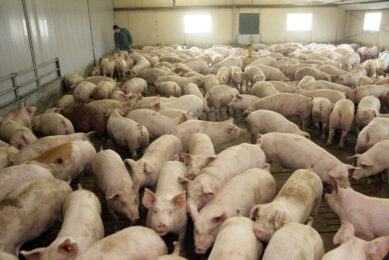
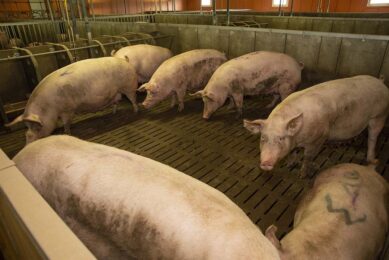
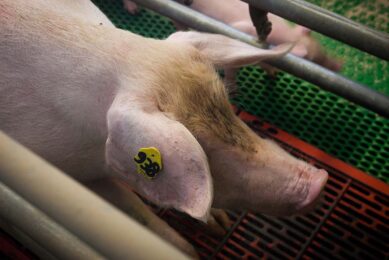
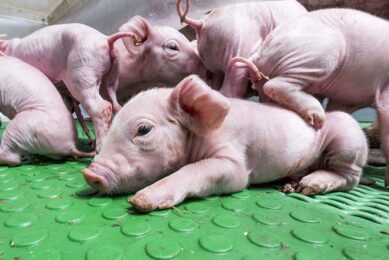





 WP Admin
WP Admin  Bewerk bericht
Bewerk bericht